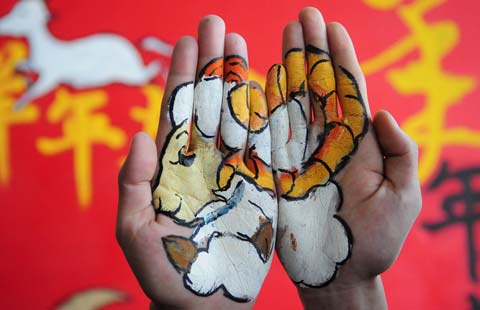Ancient vassal state, once submerged, comes to light
Updated: 2015-11-05 07:51
By Wang Kaihao in Beijing and Shi Xiaofeng in Nanchang(China Daily)
|
||||||||
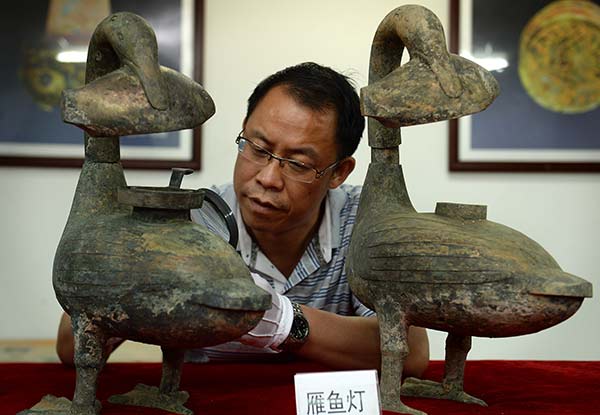 |
|
An archeologist inspects ancient bronze lamps that were excavated from a tomb of the Marquis Haihun vassal state, in Nanchang, Jiangxi province, in August. Wan Xiang / Xinhua |
A lost ancient state in Jiangxi province was unveiled to the public on Wednesday, when major archaeological breakthroughs were announced at a news conference in the provincial capital of Nanchang.
The full scope of the vassal state ruled by Marquis Haihun, from the Western Han Dynasty (206 BC-AD 24), was finally revealed after a five-year archaeological project involving China's top research institutions, including the Chinese Academy of Social Sciences, Peking University and the National Museum of China.
The earliest mention of the state was in the Book of Han, which was compiled in the first century.
In 2007, some scattered tombs of Haihun were discovered in Nanchang. A major discovery followed the investigation of tomb-robbery in 2011. A retrieved gold article was believed to have been used by an emperor, and a tomb belonging to a person of high rank was found in Nanchang's Xinjian county.
Marquis Haihun is the title given to Liu He (92-59 BC), a dethroned emperor of the Western Han Dynasty.
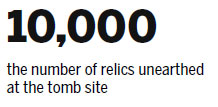
Liu's reign lasted for only 27 days, the shortest among Western Han monarchs. He was dethroned for debauchery and a licentious lifestyle, but the marquis title continued through three subsequent generations of rulers, Liu's descendants. Final destiny of this family is still under study due to lack of historical files.
It is not yet known for sure whether the tomb belonged to Liu and his wife or his descendants. However, Zijin city, where the tomb was found, is thought to be the capital of the vassal state, which had been cloaked in mystery partly because the state was once inundated by the waters of Boyang Lake.
According to Xu Changqing, director of the Jiangxi Provincial Archaeological Research Institution, the tomb site covers 40,000 square meters. About 10,000 cultural relics, including gold and bronze ware, along with jade items, were unearthed in the area. About 6,000 of them were found in the coffin chamber, which is where the most important discoveries were made.
"It's the best-preserved and most complete relics cluster ever found of the vassal state of Western Han Dynasty, Xu said.
Contact the writer at wangkaihao@chinadaily.com.cn
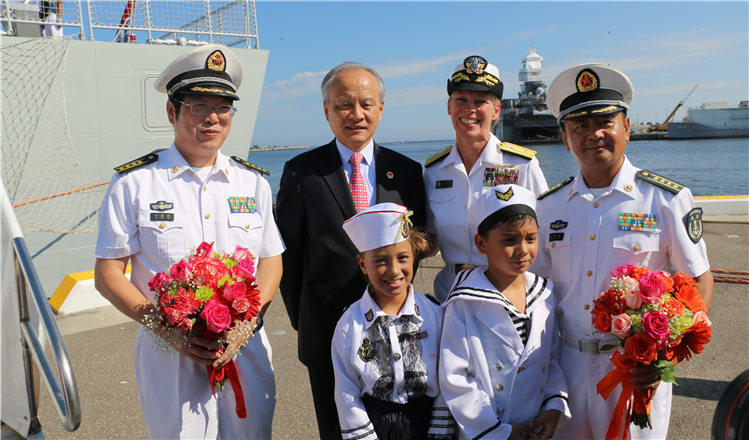
 PLA Navy fleet pays visit to Florida
PLA Navy fleet pays visit to Florida
 Peace Ark docks at San Diego
Peace Ark docks at San Diego
 Clinton calls for US minimum wage increase to $12 an hour
Clinton calls for US minimum wage increase to $12 an hour
 High-level exchanges between China and Vietnam
High-level exchanges between China and Vietnam
 Photographer presents 'aristopets'
Photographer presents 'aristopets'
 Photograph portraying Chinese fishermen wins top prize
Photograph portraying Chinese fishermen wins top prize
 World's top 10 economies for doing business
World's top 10 economies for doing business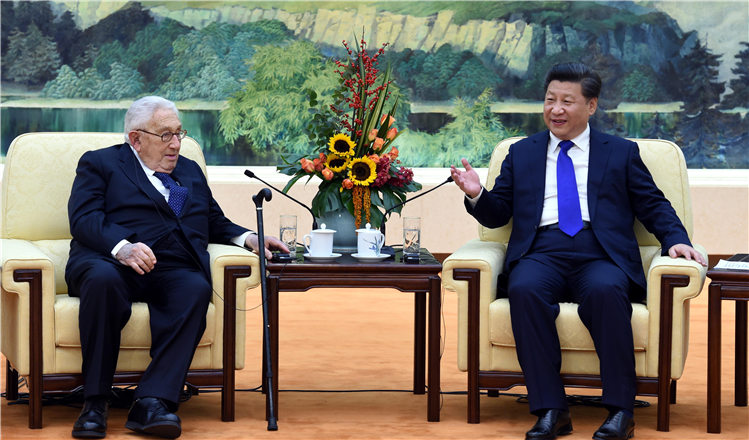
 Xi: new chances for Sino-US ties
Xi: new chances for Sino-US ties
Most Viewed
Editor's Picks

|

|

|

|

|

|
Today's Top News
Tu first Chinese to win Nobel Prize in Medicine
Huntsman says Sino-US relationship needs common goals
Xi pledges $2 billion to help developing countries
Young people from US look forward to Xi's state visit: Survey
US to accept more refugees than planned
Li calls on State-owned firms to tap more global markets
Apple's iOS App Store suffers first major attack
Japan enacts new security laws to overturn postwar pacifism
US Weekly

|

|



